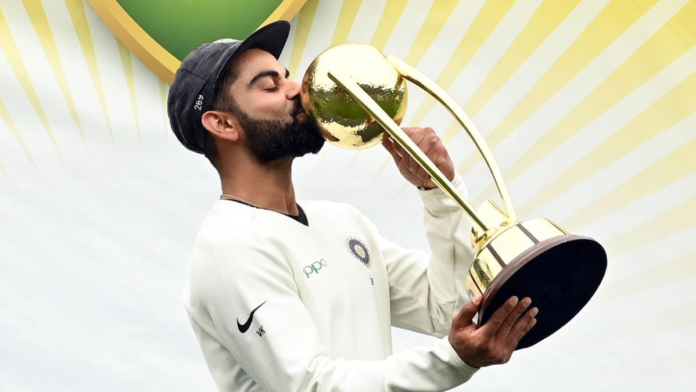“Our aim was to take the pitches out of the equation. You have to take 20 wickets, whether it’s Johannesburg, Mumbai, Delhi, Auckland or even Melbourne. So the task was to take 20 wickets.”
This statement by Ravi Shastri after India whitewashed South Africa at home in 2019 sums up the mentality of the Indian red ball side back when they had the Kohli-Shastri partnership.
As Virat Kohli called it a day in Test cricket on Monday (May 12), his remarkable legacy as a captain who revolutionised India’s fast-bowling attack remains unforgettable. Kohli’s tenure as a leader wasn’t just about personal milestones, it marked a tactical shift in India’s approach to red-ball cricket, especially the way he built the pace factory along with Shastri.
Also Read | England add Kiwi pacer as ‘Specialist Skills Consultant’ to coaching staff till India Test tour
Kohli, alongside Shastri, prioritised fitness, aggression, and relentless fast bowling as the foundation of the team. Under his leadership, seamers like Bhuvneshwar Kumar, Jasprit Bumrah, Ishant Sharma, Mohammed Shami, Umesh Yadav, and Mohammed Siraj grew and dominated the 22 yards, not just at home but overseas too.
In Virat’s 68-match stint as the captain, India’s bowlers delivered standout numbers: a strike rate of 51.39 and an average of 26, a combination few captains in Test history have achieved. Only Sir Vivian Richards’ pacers had better numbers, with an average of 22.89 and a strike rate of 50.17. Kohli wasn’t far behind the West Indian legend.
What do these numbers mean?
A bowling average tells us how many runs a bowler concedes per wicket; the strike rate shows how many balls they need to take one scalp. Kohli’s fast bowlers gave away only 26 runs per wicket and struck every 51 balls. This was some phenomenal achievement.
One of the finest examples of Kohli’s fast-bowling philosophy was on full display at Lord’s stadium against England in 2021. After a lower-order batting partnership between Bumrah and Shami, Kohli pumped his troops with belief. India took 10 England wickets in just 60 overs, and that too on the final day. The energy was electric on the ground as every Indian player just meant business.
“We decided 60 was our mark. We knew one breakthrough and we’d be on top. Our fans got behind us, and we fed off that energy,” Kohli said after that win.
It wasn’t just a victory, it was a moment that defined his captaincy. India won by 151 runs, and Lord’s turned into a fortress painted in tricolour as India had won just after Independence Day (15 August, 2021).
Kohli also redefined India’s success overseas and changed the entire approach. He commanded India to 16 Test wins abroad in 36 matches, surpassing Sourav Ganguly’s record of 11. His finest moment was becoming the first Asian captain to win a Test series in Australia.
India’s historic 2-1 win in 2018–19 against the Kangaroos reshaped world perceptions about India’s dominance in Test cricket. Under Kohli, the commander, there was a 3-0 whitewash of Sri Lanka (2017), two 2-0 victories in the West Indies, and a 2-1 lead in England in 2021 before COVID delayed the final Test. Though India later lost that match under Bumrah and England drew the series 2-2.
These weren’t just wins. They were bold and loud statements to the world.
From Adelaide to Cape Town, Nottingham to The Oval, Kohli’s India triumphed in SENA countries, where previous Indian sides often crumbled. It wasn’t only about the bowling. It was about belief and grit. Kohli and Shastri built a culture where every quick bowler was trusted, backed, and groomed to win Tests anywhere in the world.
Virat Kohli didn’t just captain India in whites, he transformed them, made them fearless and produced fast bowling machines.
His legacy in Test cricket will be etched forever like the white seam is stitched tightly to the red ball, holding it all together through every day, every spell and every session.
After Virat’s exit from the Indian red ball setup, it will be curious to see who carries this rich legacy forward. Time will tell us the same.


